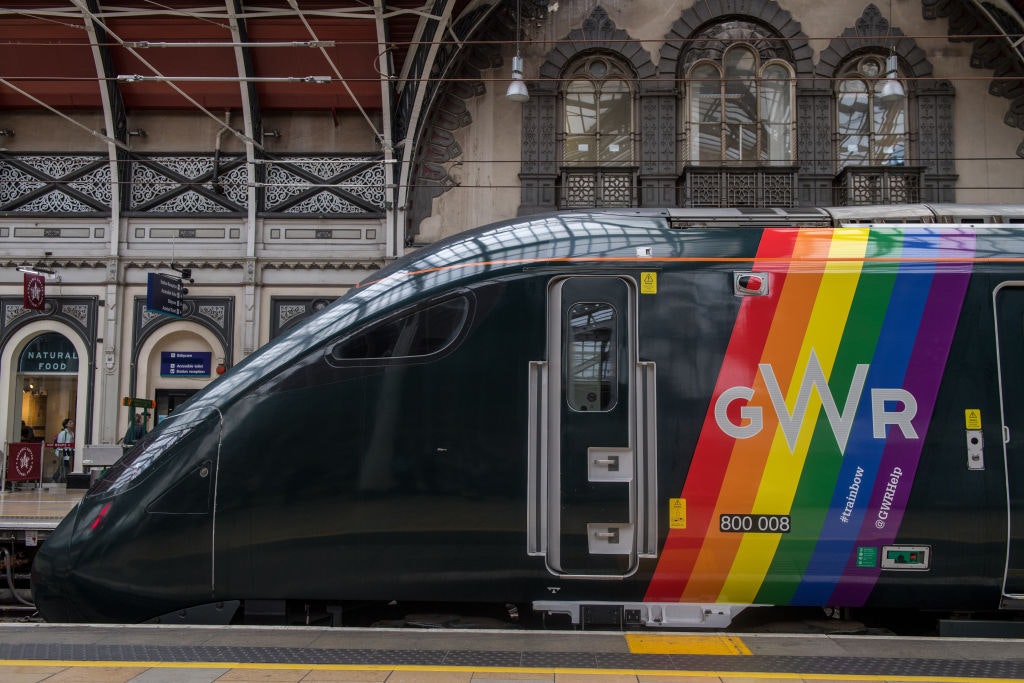What’s ugly, basic and has no walls?
The ExploreStation initiative has produced a nowhere-design which serves nobody
Just in case recent proposals centring “beauty” at the heart of future property developments have left you feeling too optimistic about our built environment, let me share with you the latest ambitious scheme from Network Rail.
These stations will be powered by that famous British sun
“ExploreStation is an initiative commissioned by Network Rail, and led by [the] Design Council, exploring the future of railway stations across Britain.” Apparently “the aim is to create better travel experiences and new community hubs for the benefit of passengers and local people alike”, all of which sounds inoffensive enough, in a jargony, New Labour sort of a way. That is, until you realise they intend to achieve this by designing a standard, generic, copy-and-paste new modular railway station made up of committee-conceived “kit parts”, which will be constructed ubiquitously across the country whenever any future station is required, or whenever any pre-existing station needs an upgrade, replacement or repair. The intention is for every station to look the same, whether it is in a built-up urban environment, a historic market town, or the middle of a rolling greenbelt landscape.
The aesthetic they propose is (no surprise) urban, minimalist modernism. By which I mean it’s ugly and basic and has no walls. Each station will be centred around a towering, white, featureless rectangle, which will light up with the basic outline of a clockface, huge full-length bars of white illumination, and details of train delays. Spreading from this monolith at ground level is a “station canopy” roof designed not so much to keep you dry as it is to house the solar panels (these stations will be powered by that famous British sun we’re so endlessly spoiled with). And that’s about it. No locally relevant design elements, no waiting rooms, no brickwork or human craft, no attempt to sympathise with or acknowledge the architecture, aesthetic or landscape of the area.
Though this new design is intended to be used generically at both urban metropolis and rustic idyll alike, it has, of course, only bothered with considerations for the urban metropolis. It was conceived of by a city based firm off the back of eleven sparsely attended workshop days in London, Manchester, Bristol and Glasgow, in conjunction with an organisation called Digital Urban. The pretence that this is suited to or designed for the countryside is insulting. Anyone who has stood at an isolated rural station in the middle of a windy winter knows the value of walls.
It’s a funny “diversity” that makes everything the same
The online consultation is open until at least the end of the month, and you can look at the designs in more (but not much more) detail and “have your say” at the link here. I fervently urge you to do so, though it isn’t easy. The site has been clunkily and awkwardly laid out (a cynic would say to discourage actual engagement). Alongside a not-what-it-says-on-the-tin smiley face rating system are leading questions and limited response options, all tending to distort and manipulate feedback so that it inevitably supports the design they’ve already decided to make.
It is, frankly, bizarre that such a project has gone through this far. The idea of replicating an old fashioned, ugly, urban design generically and near-identically at all spaces across the country is ludicrous. It not only runs counter to current best practice in planning, but actively goes against one of the project’s nine stated aims: “to reflect and embody local character and heritage”. Not only do these designs completely fail to achieve this, but if built they would instead damage local character and heritage, purging community distinctiveness and replacing with a generic, one-size-fits-all bit of mid-90s corporate naffness. It’s a funny sort of “diversity” that seeks to make everything the same.
This is not the only contradiction in the messy, unworkable, self-defeating proposals. The effect of the design is to minimise the existence of the station. To create anti-places, which don’t feel solid or permanent or real, and which aren’t even really buildings. It proposes to do this in a way which is “welcoming”, but how can a building be welcoming when it’s trying not to be noticed? How can a building become an established and valued “community hub” if it’s also trying to remain transitory and ephemeral? How can designing something to be short-lived and easy to dismantle “ensure longevity”? The answer, of course, is that it can’t, and it doesn’t. These are basic paradoxes and contradictions that make people in suits feel clever when they read a report, but which remain unworkable and doomed to failure in execution. It is nowhere-design, which serves nobody.
Anti-places belong nowhere and to no one
Some of the most beautiful buildings that small towns have today are the 19th and early 20th century railway stations that were built with priorities above and beyond the soullessness of a stale, Blairite architectural establishment. They have achieved longevity, they are cherished by their communities and they welcome all who pass through them. They manage all of this through high levels of beauty and craftsmanship gauged towards the people who use them, rather than the people who designed them. In the wake of the Building Better Building Beautiful Commission, and after recent successes recognising beauty as the antidote to NIMBYism, this project has the rare opportunity to embrace the distinctive vernaculars, the romance, and the cultural roles that railway stations still hold in communities and wider society, but to explore the lessons of these established, successful, traditional stations in a sustainable, accessible context. They can do genuine social, environmental and cultural good in the long term.
The chosen architects (Edinburgh based 7N) are not, however, positioned to do this. Instead they are making anti-places, which belong equally nowhere and equally to no one, but which are somehow supposed also to be welcoming, loved by and reflective of communities. They won’t be. One of the stated priorities is to “provide consistent quality of space and service” — I would suggest that consistent mediocrity and consistent ugliness is not the win they want, and that high quality which varies from place to place is better than consistently low quality which is predictably identical everywhere.
Whatever the outcome of this sham consultation, they will most likely make the same, bland thing that has been made for decades. An elite group of fellow urban architects will slap them on the back and pocket the public money, and everybody else will just have to get used to the extra level of alienation on their commute, and to feeling a little bit worse whenever they go to the railway station.
Enjoying The Critic online? It's even better in print
Try five issues of Britain’s newest magazine for £10
Subscribe














